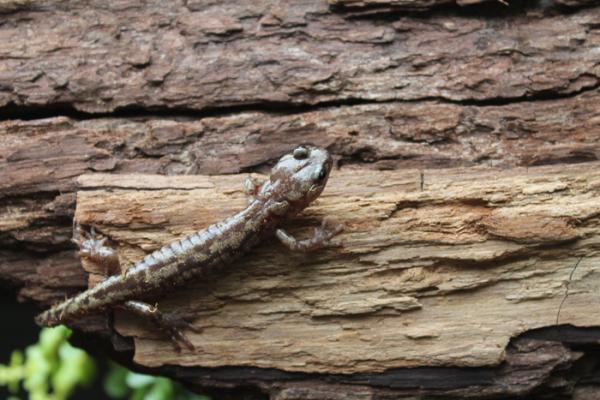Salamanders that live their entire lives in the crowns of the world’s tallest trees, California’s coast redwoods, have evolved a behavior well-adapted to the dangers of falling from high places: the ability to parachute, glide and maneuver in mid-air.
Flying squirrels, not to mention numerous species of gliding frogs, geckos, and ants and other insects, are known to use similar aerial maneuvers when jumping from tree to tree or when falling, so as to remain in the trees and avoid landing on the ground.
Similarly, the researchers suspect that this salamander’s skydiving skills are a way to steer back to a tree it’s fallen or jumped from, the better to avoid terrestrial predators.
“While they’re parachuting, they have an exquisite amount of maneuverable control,” said Christian Brown, a doctoral candidate at the University of South Florida (USF) in Tampa and first author of a paper about these behaviors. “They are able to turn. They are able to flip themselves over if they go upside down. They’re able to maintain that skydiving posture and kind of pump their tail up and down to make horizontal maneuvers. The level of control is just impressive.”
Read more at University of California - Berkeley
Image: The wandering salamander, Aneides vagrans, is about 4 inches (10 centimeters) long and lives its entire life in the crowns of redwood trees more than 150 feet above the ground. Researchers discovered that it has adapted to its high-rise lifestyle by developing the ability to parachute and glide when falling. (Credit: Christian Brown)


